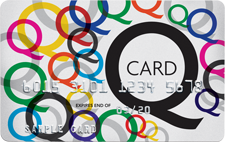ORTHOKERATOLOGY
(ORTHO-K)
Ortho-K is gentle reshaping of the cornea (the front window of the eye) to correct blurred vision, using contact lenses.
Special custom designed contact lenses worn overnight, alter the shape of the cornea to produce clear, lasting vision throughout the day once the lenses are removed.
BENEFITS OF ORTHO-K
- No glasses
- Control of progressing myopia in children and teenagers
- No daytime dryness or irritation from contacts
- No problems with dusty or dry environments
- No surgery
- Reversible
- You can wear regular sunglasses
- Freedom for sports, especially swimming and water sports
WHO IS SUITABLE FOR ORTHOKERATOLOGY?
Orthokeratology is suitable for anyone over 6 or 7 years of age who can wear contact lenses, and wants to have clear vision without wearing glasses or contacts during the day.
It is most successful for people who fit the following profile:
- Mild to moderate myopia (-0.50D to –4.00D) with minimal astigmatism
- Sports people, active individuals and those who risk losing their contacts
- Those whose jobs don’t suit regular contact lenses such as in dusty environments
- Existing wearers who suffer with irritation from their contact lenses
- Those who don’t want to risk laser surgery but need a reversible and affordable alternative to correct their vision
- Contact lens wearers who have allergies or get dry eyes from air conditioning or computer use
MYOPIA CONTROL AND ORTHO-K
Myopia or short-sightedness blurs distance vision, and has become so prevalent the World Health Organization estimates that 50% of the global population will be myopic by 2050. Myopia progresses most rapidly in the early stages, so starting treatment as early as possible will give the best opportunity for a positive outcome. In the majority of cases myopia progression will naturally stop by their mid-twenties. The latest research from Hong Kong, Europe USA and Australia (Swarbrick 2010) confirms the observations of optometrists over many years that overnight Ortho K reduces (and may even stop) the progression of myopia in children and teenagers by at least half.

